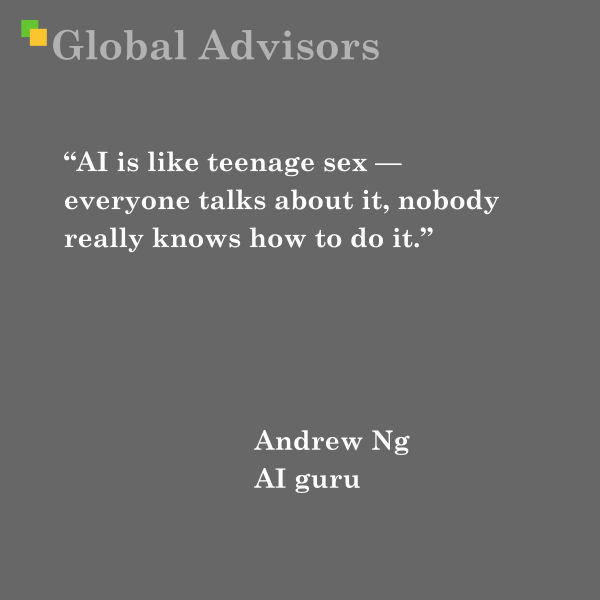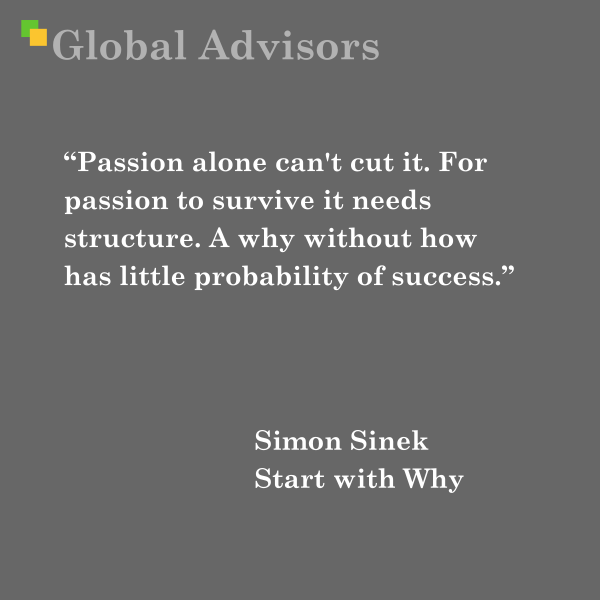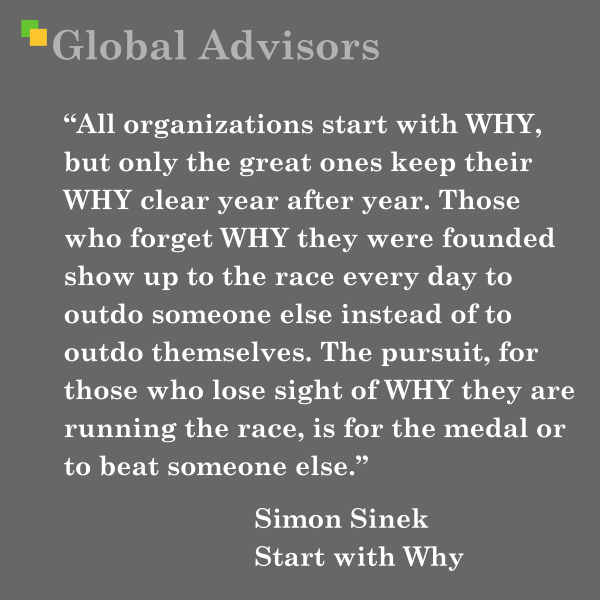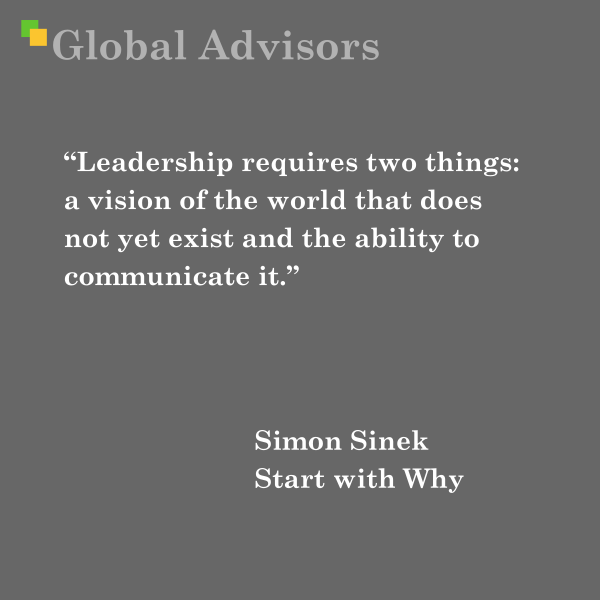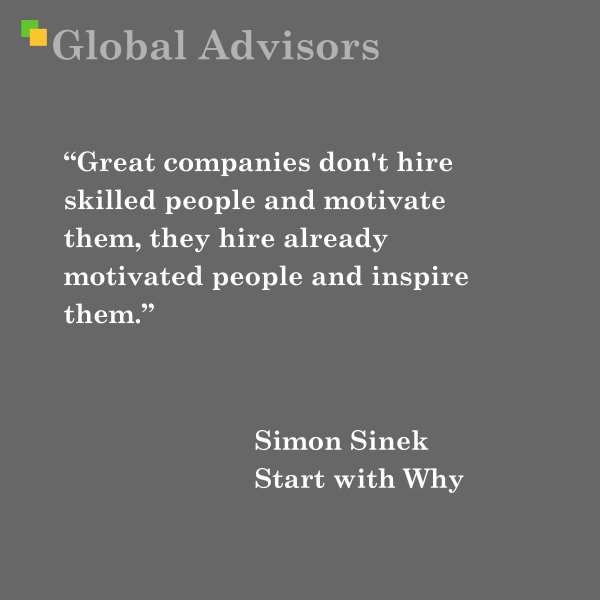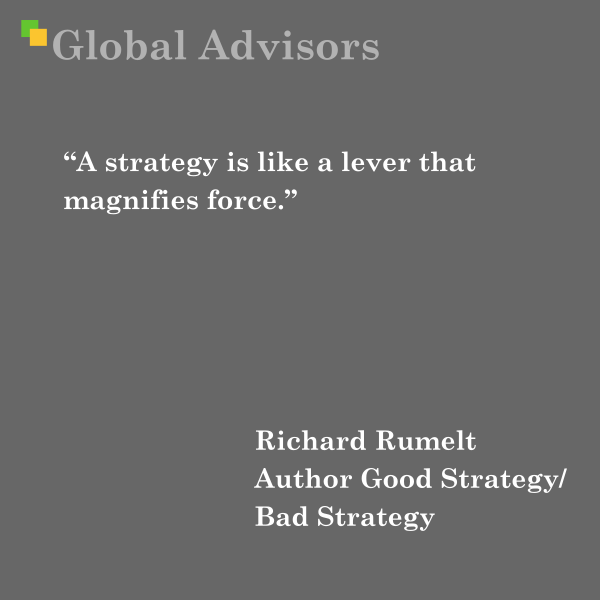| |
|
| |
| |
| |
|
A daily bite-size selection of top business content. |
| |
| |
| |
Quote: Andrew Ng, AI guru“In the age of AI, strategy is no longer just about where to play; it’s about how to adapt.” — Andrew Ng, AI guruThis quote from Andrew Ng captures a profound shift in how organizations and leaders must approach strategy in the era of artificial intelligence. Traditionally, strategic planning has focused on identifying the right markets, customers, or products—the “where to play” aspect. However, as AI rapidly transforms industries, Ng argues that the ability to adapt to ongoing technological changes has become just as crucial, if not more so. The background for this perspective stems from Ng's deep involvement in the practical deployment of AI at scale. With advances in machine learning and automation, the competitive landscape is continuously evolving. It is no longer enough to set a single strategic direction; leaders need to develop organizational agility to embrace new technologies and iterate their models, processes, and offerings in response to rapid change. Ng’s message emphasizes that AI is not a static tool, but a disruptive force that requires companies to rethink how they respond to uncertainty and opportunity. This shift from fixed planning to adaptive learning mirrors the very nature of AI systems themselves, which are designed to learn, update, and improve over time. Ng’s insight also reflects his broader view that AI should be used to automate routine tasks, freeing up human talent to focus on creative, strategic, and adaptive functions. As such, the modern strategic imperative is about continually repositioning and reinventing—not just staking out a position and defending it. About Andrew NgAndrew Ng is one of the world’s most influential figures in artificial intelligence and machine learning. Born in 1976, he is a British-American computer scientist and technology entrepreneur. Ng co-founded Google Brain, where he played a pivotal role in advancing deep learning research, and later served as Chief Scientist at Baidu, leading a large AI group. He is also a prominent educator, co-founding Coursera and creating widely popular online courses that have democratized access to AI knowledge for millions worldwide. Ng has consistently advocated for practical, human-centered adoption of AI. He introduced the widely referenced idea that “AI is the new electricity,” underscoring its foundational and transformative impact across industries. He has influenced both startups and established enterprises through initiatives such as Landing AI and the AI Fund, which focus on applying AI to real-world problems and fostering AI entrepreneurship. Andrew Ng is known for his clear communication and balanced perspective on the opportunities and challenges of AI. Recognized globally for his contributions, he has been named among Time magazine’s 100 Most Influential People and continues to shape the trajectory of AI through his research, teaching, and thought leadership. His work encourages businesses and individuals alike to not only adopt AI technologies, but to cultivate the adaptability and critical thinking needed to thrive in an age of constant change.
|
| |
| |
Quote: Daniel Kahneman, Nobel Laureate“AI is great at multitasking: it can misunderstand five tasks at once.” — Daniel Kahneman, Nobel LaureateThis wry observation from Daniel Kahneman highlights the persistent gap between expectation and reality in the deployment of artificial intelligence. As AI systems increasingly promise to perform multiple complex tasks—ranging from analyzing data and interpreting language to making recommendations—there remains a tendency to overestimate their capacity for genuine understanding. Kahneman’s quote playfully underscores how, far from being infallible, AI can compound misunderstandings when juggling several challenges simultaneously. The context for this insight is rooted in Kahneman’s lifelong exploration of the limits of decision-making—first in humans, and, by extension, in the systems designed to emulate or augment human judgment. AI’s appeal often stems from its speed and apparent ability to handle many tasks at once. However, as with human cognition, multitasking can amplify errors if the underlying comprehension is lacking or the input data is ambiguous. Kahneman’s expertise in uncovering the predictable errors and cognitive biases that affect human reasoning makes his skepticism toward AI’s supposed multitasking prowess particularly telling. The remark serves as a reminder to remain critical and measured in evaluating AI’s true capabilities, especially in contexts where precision and nuance are essential. About Daniel KahnemanDaniel Kahneman (1934–2024) was an Israeli-American psychologist whose groundbreaking work revolutionized the understanding of human judgment, decision-making, and the psychology of risk. Awarded the 2002 Nobel Memorial Prize in Economic Sciences, he was recognized “for having integrated insights from psychological research into economic science, especially concerning human judgment and decision-making under uncertainty”. Together with collaborator Amos Tversky, Kahneman identified a series of cognitive heuristics and biases—systematic errors in thinking that affect the way people judge probabilities and make decisions. Their work led to the development of prospect theory, which challenged the traditional economic view that humans are rational actors, and established the foundation of behavioral economics. Kahneman’s research illuminated how individuals routinely overgeneralize from small samples, fall prey to stereotyping, and exhibit overconfidence—even when handling simple probabilities. His influential book, Thinking, Fast and Slow, distilled decades of research into a compelling narrative about how the mind works, the pitfalls of intuition, and the enduring role of error in human reasoning. In his later years, Kahneman continued to comment on the limitations of decision-making processes, increasingly turning his attention to how these limits inform the development and evaluation of artificial intelligence. His characteristic blend of humor and rigor, as exemplified in the quoted observation about AI multitasking, continues to inspire thoughtful scrutiny of technology and its role in society.
|
| |
| |
Quote: Andrew Ng, AI guru“AI is like teenage sex—everyone talks about it, nobody really knows how to do it.” — Andrew Ng, AI guruAndrew Ng, captures the sense of hype, confusion, and uncertainty that has often surrounded artificial intelligence (AI) in recent years. Delivered with humor, it reflects the atmosphere in which AI has become a buzzword: widely discussed in boardrooms, newsrooms, and tech circles, yet rarely understood in its real-world applications or complexities. The backdrop to this quote is the rapid growth in public and corporate interest in AI. From the early days of AI research in the mid-20th century, the field has experienced cycles of intense excitement ("AI springs") and subsequent setbacks ("AI winters"), often fueled by unrealistic expectations and misunderstanding of the technology's actual capabilities. In the last decade, as machine learning and deep learning began to make headlines with breakthroughs in image recognition, natural language processing, and game-playing, many organizations felt pressure to claim they were leveraging AI—regardless of whether they truly understood how to implement it or what it could achieve. Ng's remark wittily punctures the inflated discourse by suggesting that, like teenage sex, the reality of AI is far less straightforward than the bravado implies. It serves as both a caution and an invitation: to move beyond surface-level conversations and focus instead on genuine understanding and effective implementation. About Andrew NgAndrew Ng is one of the most influential figures in artificial intelligence and machine learning. He is known for his clear-eyed optimism and his ability to communicate complex technical ideas in accessible language. Ng co-founded Google Brain, led Baidu’s AI Group, and launched the pioneering online machine learning course on Coursera, which has introduced AI to millions worldwide. Ng frequently emphasizes AI’s transformative potential, famously stating that “AI is the new electricity”—suggesting that, much like electricity revolutionized industries in the past, AI will fundamentally change every sector in the coming decades. Beyond technical achievement, he advocates for practical and responsible adoption of AI, striving to bridge the gap between hype and meaningful progress. His humorous comparison of AI discourse to teenage sex has become a memorable and oft-cited line at technology conferences and in articles. It encapsulates not only the social dynamics at play in emerging technological fields, but also Ng's approachable style and his drive to demystify artificial intelligence for a broader audience
|
| |
| |
Quote: Simon Sinek, Start with Why“Passion alone can't cut it. For passion to survive it needs structure. A why without how has little probability of success.” - Simon Sinek, Start with Why: How Great Leaders Inspire Everyone to Take ActionThe quote captures a critical insight from Sinek’s widely recognized “Golden Circle” framework, which emphasizes that success in organizations and individuals stems not just from knowing their purpose (“Why”), but also from structuring and operationalizing that purpose through actionable strategies (“How”). Sinek observes that many are inspired by passion and a compelling purpose, but passion by itself is fleeting without the discipline and practical systems that bring it to life. In his view, the most impactful leaders and organizations are those that take their “Why”—the core reason they exist or the cause that drives them—and develop clear, consistent “How” principles, which are the values, processes, or actions that sustain that purpose over time. Without “How,” even the strongest convictions can fizzle, as there’s no reliable way to translate vision into tangible results. This insight was shaped by Sinek’s own journey. He experienced firsthand the emptiness that can follow when passion is unmoored from structure. During a period of professional dissatisfaction, Sinek began researching why some leaders and organizations consistently outperformed others—not by relying on charismatic personalities or ambitious goals alone, but by embedding their purpose into the very fabric of everything they did. The realization: passion ignites movement, but it is structure that sustains it for the long term. About Simon SinekSimon Sinek is a British-American author, motivational speaker, and organizational consultant best known for pioneering the importance of “Why”—a concept that has redefined how leaders and organizations approach purpose, vision, and growth. He rose to international prominence following his 2009 TED Talk, “How Great Leaders Inspire Action,” which remains one of the most watched TED Talks. With several bestselling books, including Start with Why, Leaders Eat Last, and The Infinite Game, Sinek explores how clarity of purpose, authentic communication, and principled leadership forge trust and drive sustained success. His ideas and frameworks, like the Golden Circle, are now staples in leadership development across industries, helping organizations move beyond fleeting passion to build enduring, meaningful impact. Sinek’s work is a rallying call: to harness passion, leaders must also build the structures and processes—the “How”—that allow purpose to thrive and endure.
|
| |
| |
Quote: Simon Sinek, Start with Why“All organizations start with WHY, but only the great ones keep their WHY clear year after year. Those who forget WHY they were founded show up to the race every day to outdo someone else instead of to outdo themselves. The pursuit, for those who lose sight of WHY they are running the race, is for the medal or to beat someone else.” ? Simon Sinek, Start with Why: How Great Leaders Inspire Everyone to Take ActionSimon Sinek’s quote captures the central thesis of his influential book, Start with Why: How Great Leaders Inspire Everyone to Take Action. This insight emerged from Sinek’s personal struggle with purpose. After experiencing a profound loss of passion for his own work, Sinek began a personal quest to rediscover meaning. This journey led him to articulate the importance of the “WHY”—the core purpose or belief that drives individuals and organizations. Sinek realized that while many organizations begin with a strong sense of purpose, over time, the clarity of that purpose can fade. As a result, they shift focus from their original mission to external benchmarks, such as outperforming competitors, winning awards, or chasing short-term gains. In Start with Why, Sinek introduces the “Golden Circle” framework: “Why” (purpose), “How” (process), and “What” (product or service). He argues that the truly exceptional organizations are those that consistently keep their “Why” at the forefront of every decision and action. They do not chase external validation, but instead, are driven by a desire to fulfill their founding purpose and to continually surpass their own standards. This approach fosters authenticity, trust, and long-term loyalty among employees and customers alike. The quote is a reminder that losing sight of purpose leads organizations to become reactive, focused more on rivals than on progress. In contrast, staying true to their original “Why” empowers organizations to remain innovative, resilient, and inspiring for years to come. About Simon SinekSimon Sinek is a British-American author, motivational speaker, and organizational consultant known for his pioneering work on leadership and purpose-driven organizations. He gained worldwide prominence with his 2009 TED Talk, “How Great Leaders Inspire Action,” which distilled his “Golden Circle” concept and remains one of the most viewed TED Talks of all time. Sinek’s philosophy centers on the belief that people are inspired not by what organizations do, but by why they do it. His writing emphasizes that leaders should cultivate and communicate a compelling sense of purpose at every level of their organization. Beyond Start with Why, Sinek has authored several bestsellers, including Leaders Eat Last and The Infinite Game, each building on his conviction that inspired organizations create environments where trust, loyalty, and sustainable success flourish. His ideas have had a widespread impact, shaping leadership development in businesses, non-profits, and public sector organizations around the world. Sinek’s message continues to resonate with those seeking to lead with vision, authenticity, and enduring purpose
|
| |
| |
Quote: Simon Sinek, Start with Why“Leadership requires two things: a vision of the world that does not yet exist and the ability to communicate it.” - Simon Sinek, Start with Why: How Great Leaders Inspire Everyone to Take ActionSimon Sinek’s quote—“Leadership requires two things: a vision of the world that does not yet exist and the ability to communicate it”—is deeply rooted in his philosophy of leadership as presented in his bestselling book, Start with Why: How Great Leaders Inspire Everyone to Take Action. The context of this quote revolves around Sinek’s fundamental belief that effective leadership goes far beyond holding authority or managing tasks. Instead, leadership is about envisioning a future that does not yet exist and, crucially, being able to articulate that vision so it inspires others to join in its creation. This idea underpins Sinek’s “Golden Circle” model, introduced in both his book and his widely viewed TED Talk. The model centers on the concept of starting with “Why”—the core belief or purpose that drives an individual or organization—before progressing to “How” they do things and “What” they do. Sinek argues that it is this clarity of vision—the “Why”—and the leader’s skill in communicating it authentically, that transforms followers into believers and teams into movements. Sinek’s insight is a response to the misconception that leadership is about having all the answers or being the most qualified person in the room. He contends that real leadership is the opposite: it’s about empowering others, setting a clear direction, and painting a compelling picture of a future that does not yet exist. When leaders are able to communicate this vision effectively, they can galvanize people to achieve extraordinary things—often beyond what they thought possible. About Simon SinekSimon Sinek is a British-American author, motivational speaker, and organizational consultant, renowned for his pioneering ideas on leadership, vision, and purpose. Born on October 9, 1973, Sinek gained global recognition following his 2009 TED Talk, “How Great Leaders Inspire Action,” which remains among the most-watched TED Talks ever. His approach to leadership is characterized by a strong emphasis on purpose and selfless service, advocating that great leaders “eat last”—putting the needs of their teams before their own. Sinek’s work extends through several influential books, including Leaders Eat Last and The Infinite Game. Across his writing and speaking, he encourages leaders to focus on creating environments of trust, inspiration, and shared purpose, which yield loyal teams and lasting impact. Sinek’s influence is seen in organizations worldwide, from Fortune 500 companies to non-profits, where his ideas about the power of “Why” and vision-driven leadership continue to shape leadership development and organizational culture
|
| |
| |
Quote: Simon Sinek, Start with Why“Great companies don't hire skilled people and motivate them, they hire already motivated people and inspire them.” - Simon Sinek, Start with Why: How Great Leaders Inspire Everyone to Take ActionSimon Sinek’s quote—“Great companies don't hire skilled people and motivate them, they hire already motivated people and inspire them”—originates from his landmark book, Start with Why: How Great Leaders Inspire Everyone to Take Action (2009). Sinek’s work centers on the idea that the most successful organizations and leaders are those who can cultivate a sense of genuine purpose within their teams. The quote reflects Sinek’s core philosophy: people are not simply motivated by external incentives or manipulation, but by a deeper, intrinsic drive—what he calls their “Why”. In his book, Sinek contrasts two ways of leading and influencing behavior. The first relies on manipulation—bonuses, fear, or incentives—to get people to act. The second, and far more effective, centers on inspiration: connecting with people’s values and purpose. Sinek argues that leaders and organizations should seek out individuals who are already motivated by something bigger than themselves, and then nurture and inspire that motivation towards a shared mission. This approach is illustrated in Start with Why through stories like the Wright Brothers’ successful quest for flight, achieved through relentless passion and vision, in contrast to better-funded and credentialed rivals working for fame or reward. Sinek’s “Golden Circle” model encapsulates this leadership style: starting with “Why” (purpose), then moving to “How” (process), and finally “What” (results). For Sinek, the “Why” must always come first and be at the heart of an organization’s culture. As a result, companies that attract and inspire people who are already purpose-driven enjoy stability, loyalty, and sustained high performance. About Simon SinekSimon Sinek is a British-American author, motivational speaker, and organizational consultant known globally for his insights on leadership and inspiration. He first gained widespread recognition with his 2009 TED Talk, “How Great Leaders Inspire Action,” one of the most-viewed TED Talks of all time. This talk laid the foundation for Start with Why, which has since become a bestseller and a staple in business and leadership circles. Sinek’s philosophy emphasizes that leadership is less about formal authority and more about serving a collective vision that resonates on a human level. He has gone on to author several other influential books, including Leaders Eat Last and The Infinite Game, each exploring how trust, inspiration, and a clear sense of purpose make organizations and individuals thrive. Sinek’s work is a call to action for leaders to move beyond simply managing or motivating teams. Instead, he urges them to understand and communicate their “Why,” to inspire those who already possess the passion to contribute—and, in doing so, to achieve lasting impact and success.
|
| |
| |
Quote: Richard Rumelt, Author Good Strategy/Bad Strategy“Bad strategy is the active avoidance of the hard work of crafting a good strategy.” - Richard Rumelt, Good Strategy Bad Strategy: The Difference and Why It MattersRichard Rumelt’s work fundamentally reshaped how organizations and leaders approach the concept of strategy. The quote above highlights one of his most impactful insights: that bad strategy is not merely the absence of good intentions or smart people, but often a deliberate sidestep away from the demanding, honest work that true strategy requires. In Good Strategy/Bad Strategy, Rumelt describes how strategy is frequently misunderstood and misapplied across organizations of all sizes. He observed that too often, what passes for “strategy” is a collection of ambitious goals, vague aspirations, or inspirational slogans. These may sound compelling, but they rarely grapple with the specific challenges or obstacles standing in the way of progress. Rumelt emphasizes that developing good strategy demands serious effort: clear-eyed diagnosis of the real problem, formulation of guiding policies, and determination of coherent actions that address the root causes rather than the symptoms. This process can be uncomfortable and time-consuming, requiring leaders to confront unpleasant facts, challenge cherished assumptions, and make tough choices about what not to do. The “active avoidance” Rumelt describes often manifests as substituting vision statements or a laundry list of goals for the deeper analytical work required. Leaders may focus on surface-level explanations such as “underperformance” without delving into why performance is lacking or what makes the challenge particularly difficult. In avoiding the discomfort and ambiguity inherent in diagnosing the true problem, organizations fall into the trap of “bad strategy”—plans that look polished but are disconnected from reality and unlikely to guide effective action. Rumelt’s insight urges decision-makers to resist these shortcuts. He teaches that the heart of effective strategy is not found in lofty words or sheer optimism, but in the disciplined process of identifying the critical issues and focusing resources and attention on overcoming them. In his view, the willingness to do this hard work is what separates meaningful strategies from empty declarations. About Richard RumeltRichard Rumelt is internationally recognized as a pioneer of strategic thought. As a professor emeritus at UCLA Anderson School of Management, he has spent decades studying organizations, advising leaders, and helping executives discern what truly drives success. Rumelt’s rigorous, practical approach challenges conventional wisdom by insisting that strategy starts with honest analysis and focused action—not with vision alone or the accumulation of goals. His writing and teaching distill strategy to its essentials: diagnosis, guiding policy, and coherent action. Rumelt’s legacy is a body of work that encourages leaders to look past buzzwords and bravely tackle the real work of crafting solutions that make a measurable difference. This quote, and the thinking behind it, remains a call for rigor, honesty, and focus in every arena where strategy matters.
|
| |
| |
Quote: Richard Rumelt, Author Good Strategy/Bad Strategy“A great deal of strategy work is trying to figure out what is going on. Not just deciding what to do, but the more fundamental problem of comprehending the situation.” - Richard Rumelt, Good Strategy Bad Strategy: The Difference and Why It MattersRichard Rumelt, one of the leading minds in strategic thinking, developed this insight after decades of research, teaching, and consulting with organizations across the globe. The quote distills what Rumelt observed as a recurring truth: the most critical—and often neglected—aspect of strategy isn’t picking a course of action, but genuinely understanding the situation at hand. In Good Strategy/Bad Strategy, Rumelt emphasizes that all effective strategy begins with what he terms “diagnosis”—a process of peeling away surface symptoms to identify the underlying challenges or opportunities. He found that many organizations skip or rush this diagnosis phase, leaping to plans and solutions without a grounded understanding of what’s really driving results, difficulties, or change. This, in Rumelt’s view, leads to bad strategy: shallow, ineffectual plans that may look impressive but lack substance and direction. Rumelt contrasts this with good strategy, which rests on a clear-eyed assessment of reality. He argues that good strategy cannot exist without grappling with the complex, ambiguous, and sometimes uncomfortable truths about an organization’s environment, resources, and constraints. This hard work of “figuring out what is going on” involves questioning assumptions, analyzing data, and challenging groupthink—activities that require intellectual honesty and often a willingness to confront inconvenient facts. The quote also addresses a common misconception: that strategy is primarily about bold visions or ambitious goals. Rumelt insists that vision is no substitute for insight. Before deciding what to do, leaders must invest the necessary effort in comprehending their unique context. Only then can they design guiding policies and coherent actions that actually address the root causes of their challenges. By highlighting the diagnostic foundation of strategy, Rumelt’s perspective has reshaped how leaders, teams, and organizations approach problem-solving. He champions the idea that identifying and framing the true nature of a challenge is the essential first step—without which, even the best-intended plans are likely to fall short. About Richard RumeltRichard Rumelt is a distinguished scholar in the field of strategy, serving as professor emeritus at UCLA Anderson School of Management. His pioneering research and advisory work have influenced both academic thinking and practical approaches to strategic planning worldwide. Rumelt’s contributions are marked by his commitment to clarity, rigor, and the belief that strategic insight is achieved through disciplined analysis rather than wishful thinking. Through his writing and teaching, Rumelt has demystified strategy, demonstrating that its strongest foundation lies not in rhetoric or aspiration, but in the clear comprehension of circumstances. His approach fosters not just effective strategies, but a culture of intellectual honesty and resilience—qualities essential for navigating complexity and driving lasting success
|
| |
| |
Quote: Richard Rumelt, Author Good Strategy/Bad Strategy“A strategy is like a lever that magnifies force.” - Richard Rumelt, Good Strategy Bad Strategy: The Difference and Why It MattersRichard Rumelt’s compelling analogy between strategy and a lever lies at the very heart of his influential work, Good Strategy/Bad Strategy. In both engineering and physics, a lever allows a person to move a heavy load with far less effort by focusing force at a precise point. Rumelt uses this image to illustrate a core principle of effective strategy: when well-designed, strategy concentrates energy and resources on pivotal challenges, turning even limited means into outsized results. Rumelt’s thinking developed through decades of observing how organizations actually attempt to solve tough problems. He noticed that many approaches labeled as “strategy” were little more than ambition disguised as planning—collections of generic goals and empty statements, lacking in focus and leverage. From boardrooms to battlefields, Rumelt saw that real effectiveness comes when leaders zero in on the critical issue, identify what truly matters, and align efforts behind actions that will make the biggest difference. In Good Strategy/Bad Strategy, Rumelt demystifies strategy, stripping it of jargon and returning it to its essence: a means of magnifying limited resources to overcome a specific obstacle. He explains that a strong strategy doesn’t try to do everything, nor does it spread efforts thin. Instead, through a clear diagnosis of the situation, a guiding policy, and a set of coherent actions, strategy achieves leverage—the kind of focus that turns a modest push into a powerful outcome. This is the difference between a scattered to-do list and a unified, force-multiplying plan. The quote reflects Rumelt’s conviction that the power of strategy lies not in its volume or aspiration, but in its ability to leverage strengths against the right challenges, creating a force that is greater than the sum of its parts. About Richard RumeltRichard Rumelt is recognized globally as one of the leading authorities on strategy. As a professor emeritus at UCLA Anderson School of Management and a sought-after advisor to corporations and governments, Rumelt has devoted his career to unraveling what separates success from failure in strategic thinking. His early trailblazing research helped establish the field of strategic management, challenging conventional wisdom and emphasizing that true strategy comes from insight, focus, and decisive action. Rumelt’s legacy is defined by his insistence on intellectual honesty: he urges leaders to confront hard truths, resist the allure of pleasing visions, and find the real point of leverage in their situations. Through his books, lectures, and consulting, he has reshaped how leaders around the world understand and apply strategy, making his insights a cornerstone for those seeking real impact in uncertain environments. His metaphor of strategy as a lever continues to inspire, reminding us that the right focus and alignment can turn even the smallest effort into transformative progress.
|
| |
| |
|
| |
| |



